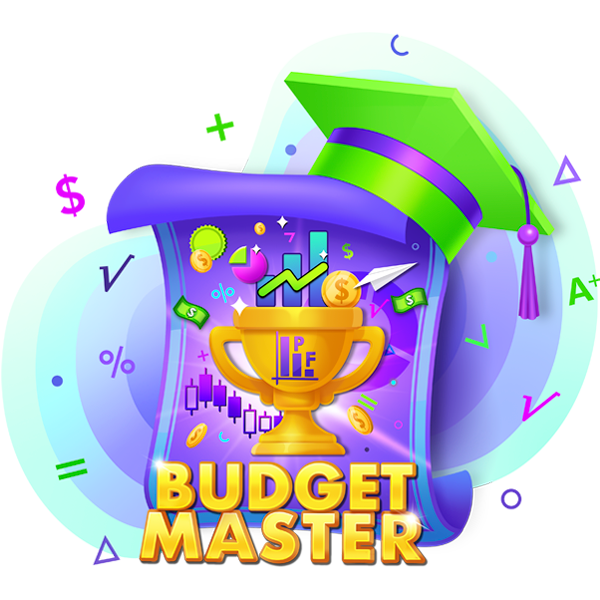What is a Student Loan?
A student loan is exactly what it sounds like – a loan given to students to finance their studies. This is most common for college or university students, but also works for trade schools and other vocational studies.
Most of the time when a person takes out a loan, they are using it to invest in an asset that they will use later – like a mortgage for a house or a car loan for a car. With a Student Loan, you are investing in yourself. The gamble you make is that the cost of the loan (plus interest) will be less than the extra income you’ll earn with the new education.
Before You Start – The FASFA

The FAFSA is the Free Application for Federal Student Aid. If you want to pursue higher education, this is the first place to start, even before you look at student loans. If you qualify for federal financial aid, it is basically free money you can put towards education (and reduce the total amount you need to borrow).
The FAFSA form can be a bit long and may require you or your parents’ tax information to see what aid you can qualify for. But when you are looking to go to school, this is the first step in the process. Many universities insist every student complete the FASFA before taking out any student loans to lower the total debt burden students will have when they graduate.
Types of Student Loans
There are a few types of student loans available for students in the United States, depending on their needs.
Federal Loans

The cheapest loans are provided by the US Department of Education. These loans are only available for students at federally approved colleges, universities, or trade schools. These have a low interest rate, but also allow very little to be borrowed – potentially not even enough to cover tuition and school fees (let alone housing costs). Federal loans have two types – “Subsidized” and “Unsubsidized”.
- With a subsidized loan, the Department of Education pays off all interest while you are in school, and for up to 6 months after you graduate while you try to find a job. This makes subsidized loans very cheap, but these loans are the hardest to get (with the lowest amount you can borrow). You need to show that you have “Financial Need” to qualify for a subsidized loan.
- Unsubsidized loans accumulate interest as soon as you take out the loan, so you’ll be building up interest the whole time you’re in school. But Federal Loans typically have a low interest rate, so this can still be an attractive option for many students (compared to private loans).
A single borrower can have both types of loans at the same time, so you might have some of your borrowed amount accumulating interest while the other is not.
How Much You Can Borrow
The amount you can borrow with a federal loan is determined by your school – schools work with the Department of Education to ensure students do not over-borrow on federal loans (meaning borrow more than the minimum it should cost to attend school).
| Year In School | Borrowing Limit |
| 1st Year Undergraduate | $3,500 subsidized, $6,000 un-subsidized ($9,500 total) |
| 2nd Year Undergraduate | $4,500 subsidized, $6,000 un-subsidized ($10500 total) |
| 3rd Year + Undergraduate | $5,500 subsidized, $7,000 un-subsidized ($12,500 total) |
| Graduate Studies | No subsidized, $20,500 unsubsidized |
| Total Cap (Across all years) | $65,500 subsidized, $73,000 unsubsidized ($138,500 total) |
Source: https://studentaid.gov/understand-aid/types/loans/subsidized-unsubsidized
You can borrow the less in your first and second years because of the risk of dropping out – the program is designed to prevent students who drop out of college from being saddled with massive debt that they are unable to repay.
If You Are A Dependent – PLUS Loans
If you are still a “dependent” of your parents for tax reasons, you can borrow even less, as it is assumed your parents should be helping you out with some of your school costs if they can claim you on their taxes.
But if your family already has financial need, your parents can obtain what are called “PLUS” loans. With a PLUS loan, your parents would take out a student loan on your behalf to help pay for your school. The difference is that your PARENTS are the ones responsible for paying back the loan, not you.
PLUS loans are not very popular – their interest rate is much higher than direct student loans, and parents in families with financial need are not usually able to take on the additional debt burden.
Private Student Loans
Private student loans are issued by other private banks and lenders. The interest rate is determined by the general market interest rate. Sallie Mae is the largest provider of private student loans – if you need student loans to finance your education, you will probably work with them at some point or another.

Private Loan Advantages
While federal loans are usually cheaper than private loans, private loans have some distinct advantages:
- Much simpler application process – usually just one or two forms with a credit check. This means the time to apply and start school is shorter and easier.
- Flexible Terms – with different payment plans, when you start paying, and ways to defer interest until you graduate depending on your needs.
- Bigger Amounts – you can usually borrow a lot more with private loans than federal loans.
- Easier to Manage – By having all of your loans in one place (skipping the federal loans entirely), you have one application process to go through each year, one payment to make after you graduate, and an easier time managing your budget.
Private Loan Risks
Student loan debt in the United States has skyrocketed, which makes some parts of private student loans controversial. The biggest drawbacks of student loans include:
- Too easy to borrow too much – college students are not celebrated for their skill in personal budgeting. Private student loans let students borrow more money – and money in the bank is money that can be spent. It can be hard to remember when you’re taking out a loan that you will eventually need to pay it back, and over-borrowing as a student (and accumulating interest the whole time you’re in school) is a good way to start your career saddled with a huge amount of debt.
- Discourages a mix – Private student loan providers usually encourage students to get all of their student loans in one place to simplify the process every school year, but this means you might miss out on better interest rates for part of your debt that you might have gotten with a federal loan. Mixing federal and private loans is a lot more work, but it can save a lot of money in the long-run.
- Flexible terms can be confusing – all of the flexible repayment options makes it sound easier to manage, but it can be challenging to know when you first sign up for a loan which path makes the most financial sense for you. This can be an extra risk.
At the end of the day, taking private loans is still a great way to finance your education, but it takes good financial discipline on your part to avoid graduation day saddled with debit.
Risks of All Student Loans
Whether you have a Federal loan or a Private loan, there are some unique risks associated with student loans.
The Risk Is On YOU
With a student loan, you are investing in yourself – the education you receive with the loan money should increase your future income. Unlike a house or car (which you can sell if you get behind on payments), if you do not complete your education, you get no benefit and all of the debt.
This means that before you take out any student debt, you should be sure that you can commit to finishing school and obtaining your degree. Ideally, you should also do some career research to see what kind of starting salary you will earn after you graduate when you plan how much you can borrow. Most undergraduate students wildly over-estimate how much they will earn after graduation – you can find estimates per major through surveys conducted by the National Association of Colleges and Employers (https://www.naceweb.org/).
Bankruptcy Does Not Work
If you rack up credit card debt or other types of loans, you always have the option of bankruptcy relief. But bankruptcy works by selling off your assets, negotiating with lenders, and coming out with a payment plan.
Because student loans are based only on the skills and credentials you should have earned while in school, student loan debt does not qualify from bankruptcy protection – there is no escape, and you are stuck with it until you can pay it off.
Budgeting Is Essential

Knowing how to build an effective budget, and stick with it, while in school is the best thing you can possibly do to manage your student loans. Ideally, at the end of each year, you should have a sizable amount of the loan amount that you did not use (and kept as an Emergency Fund), and can repay immediately when you graduate to lower the interest you need to pay going forward.
This means you need strong long-term planning, good impulse control, and the ability to see yourself after graduation – and understand how much your loan payments are going to cut out of every paycheck.
Student Loan Best Practices
If you are considering higher education and might need student loans, follow these steps:
- Complete The FAFSA. This is free money that you do not need to pay back, and so will reduce the amount of loans you need to take. You will need to complete this first before most student loan programs will even take your application.
- Look For Scholarships. Sallie Mae has a scholarship search tool, and others exist as well. Scholarships are another source of free money, and most scholarships receive very few applications because students never bother to apply. Spending a few hours searching and applying for scholarships can save off thousands of dollars from your final loan amount.
- Start With Federal Loans. Apply for federal loans first, especially subsidized federal loans. It takes a bit more work every year to get funded, but the lower interest rate will save big money when it comes to repay.
- Minimize Private Loans. Most students end up needing some private loans to finance their education (particularly living expenses), but this should be the last piece you apply for once you’ve already shaved off as much as you can with the other options.
After Graduation – Refinance
After you graduate from school, investigate options to refinance your student loans. By the time you finish school, you will probably have several different student loans (mixes between Federal and Private, different periods and interest rates, ect), which can be tricky to manage.
However, there are many companies set up specifically to refinance your student loans after graduation, usually paying you a loan transfer bonus, and potentially a lower interest rate. Refinancing companies want to see that you’ve started work (and how much you’re earning) before they give you options, but this is an often over-looked way to save thousands more dollars on your total debt burden right out of school.